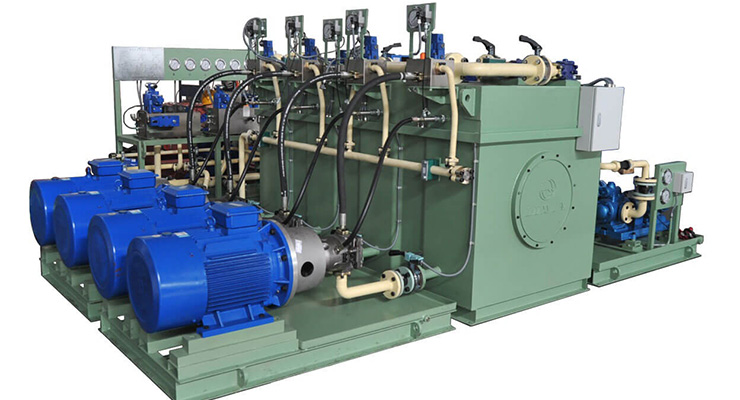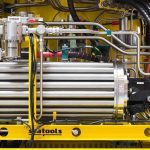Just as celebrities occasionally feel the need to re-invent themselves to deal with competition from younger rivals, so traditional hydraulics has had to reinvent itself faced with competition from systems which offered more precision. While hydraulic systems were never really under any threat in markets such as farm machinery where sheer force was the key requirement, they were increasingly finding themselves displaced by more modern technologies where precision measurement was an important factor.
Brawn Becomes Brain
The development of modern hydraulics arguably echoes the development of modern industry. During the industrial revolution, factories worked largely on brawn with images from the period showing steam-belching machines operated by hard-working labourers. Today, the focus of industry is on working smarter rather than just applying muscle power. Part of the reason for this is that the nature of the products being made has changed. Factories today manufacture technologies that previous generations could barely have imagined. Margins are as thin as silicon wafers and any error can have significant financial consequences. Similar comments apply to other hydraulics strongholds such as construction.
Hydraulics Fights Back
While hydraulics on its own may lack the precision needed for a modern industrial environment, when it is coupled with advanced electronics, industry can have the best of both worlds. One of the reasons why hydraulics has been appreciated for centuries is because its lifting power is smooth. When partnered with digital electronic sensors capable of undertaking thousands of measurements a second, hydraulic systems can be refined to a very high degree of precision. Another reason for the longevity of hydraulics is the fact that the essentially simple mechanics behind the technology makes for a high degree of reliability. Given that reducing variability in manufacturing (and other areas) has been a major preoccupation for industry since the invention of Six Sigma in the mid 1980s any technology noted for its consistency already has a strong point in its favour.
Examples Of Hydraulic Success
These new enhanced hydraulic systems are moving into unexpected places. The same technology that powers heavy-lifting equipment and automotive systems may soon be finding its way into the human body. Researchers at the University of Minnesota are working on a project to create orthotics using hydraulics. As the body ages (or as the results of sporting activity or accidents), joints are often the places where the effects of wear and tear begins to show first. The idea of using hydraulics to replace knee and ankle joints has obvious benefits given the loads carried by them even during day-to-day activity. As the technology develops, it may well become small enough for tiny joints such as knuckles, worn out by excessive keyboard use. They estimate that the technology will be a reality in anything between 10 and 20 years from now.


